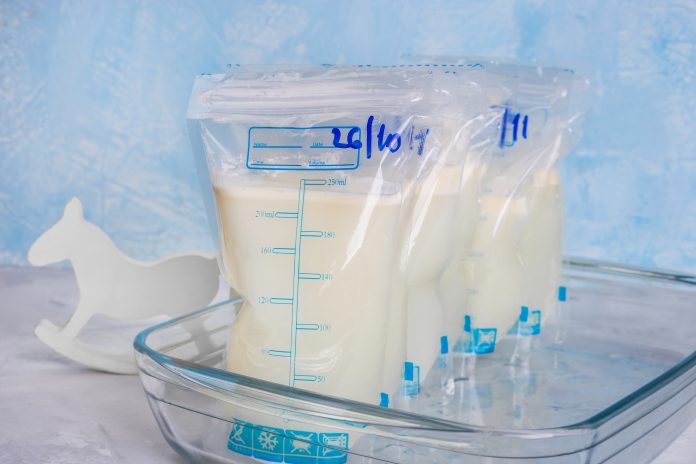Breast milk is an amazing resource and provides essential nutrients and antibodies to your baby, but what happens if you need to store and reheat for later use? In this article, we will explore the safety of reheating breast milk and provide guidelines for storing and reheating it properly.
Is it safe to reheat breast milk?
Many new mothers wonder if it is safe to reheat breast milk, and the answer is yes, it is safe to do so. However, there are certain guidelines that need to be followed to ensure the safety and quality of the milk. Breast milk can be safely reheated as long as it is done properly and within a certain timeframe. I’ll cover all the key points in this article and for reference, here’s the Government’s advice from the CDC on Handling Breastmilk.
Guidelines for storing and reheating breast milk
To maintain the quality of breast milk, it is important to store it correctly. Breast milk should be stored in clean, sterilized containers that are specifically designed for storing breast milk. These containers should be tightly sealed to prevent any contamination. It is recommended to store breast milk in small amounts, such as 2 to 4 ounces, to minimize waste. Take a look at our article on how to manage storage of formula milk.
When reheating breast milk, it is crucial to do so gently to preserve the nutrients and prevent hot spots. The best way to warm breast milk is to place the container in a bowl of warm water or use a bottle warmer. Never use a microwave to heat breast milk, as it can destroy the antibodies and nutrients present in the milk.
How many times can you reheat breast milk?
Although breast milk can be reheated and used multiple times, it is important to exercise caution and it is generally recommended to use reheated breast milk within 24 hours. If your baby does not finish the reheated milk within that timeframe, it is best to discard it. Read our article on how long breast milk will last.
Tips for reheating breast milk properly
To ensure the safety and quality of reheated breast milk, here are some tips to follow:
- Thaw frozen breast milk in the refrigerator overnight, or use a bottle warmer specifically designed for frozen breast milk.
- Avoid shaking the bottle vigorously after reheating, as it can destroy the antibodies present in the milk.
- Test the temperature of the milk before feeding it to your baby. You can do this by placing a few drops on your inner wrist. It should feel lukewarm, not hot.
Common misconceptions about reheating breast milk
There are a few misconceptions regarding reheating breast milk that need to be addressed. One common misconception is that you can reheat breast milk multiple times. As mentioned earlier, it is best to use reheated breast milk within 24 hours.
Another misconception is that you can reheat breast milk in the microwave. Microwaving breast milk can lead to uneven heating, which can create hot spots that can scald your baby’s mouth. It can also destroy the beneficial properties of breast milk.
Alternatives to reheating breast milk
If reheating breast milk is not an option, there are alternatives available. One option is to feed your baby cold or room temperature breast milk. This can be convenient when you are on the go or if your baby prefers it that way. Another alternative is to combine freshly expressed breast milk with refrigerated breast milk to achieve a desired temperature.
How to tell if breast milk has gone bad
It is important to know how to tell if breast milk has gone bad to ensure the safety of your baby. If breast milk smells sour or has a rancid odor, it has likely gone bad and should be discarded. Additionally, if the milk has separated into layers or has clumps, it is a sign that it has spoiled.
Best practices for using and storing breast milk
To ensure the safety and quality of breast milk, here are some best practices to follow:
- Always wash your hands before expressing or handling breast milk.
- Use clean, sterilized containers for storing breast milk.
- Label each container with the date and time it was expressed.
- Store breast milk in the back of the refrigerator or freezer, where the temperature is most consistent.
- Avoid storing breast milk in the refrigerator door, as it is subject to temperature changes when the door is opened and closed frequently.
Conclusion: Ensuring the safety of reheated breast milk
In conclusion, reheating breast milk is safe as long as it is done properly and within the recommended guidelines. Following the guidelines for storing and reheating breast milk will help maintain its quality and ensure the safety of your baby. Remember to always test the temperature of the milk before feeding it to your baby and discard any unused reheated milk after 24 hours. By following these best practices, you should be able to provide your baby with the benefits of breast milk even when reheating is necessary.
If you found this article helpful, please share it with other new mothers who may have questions about reheating breast milk.

